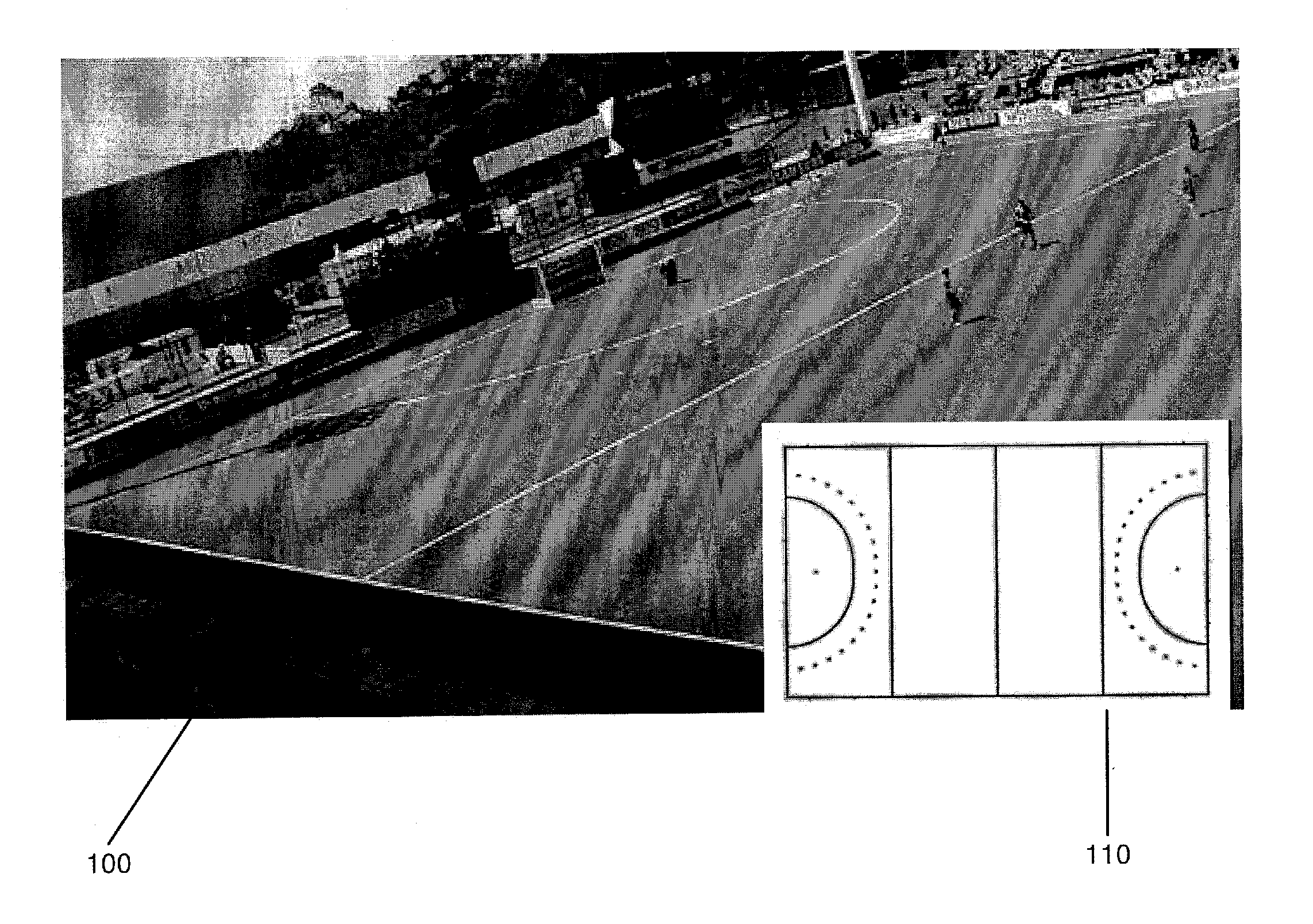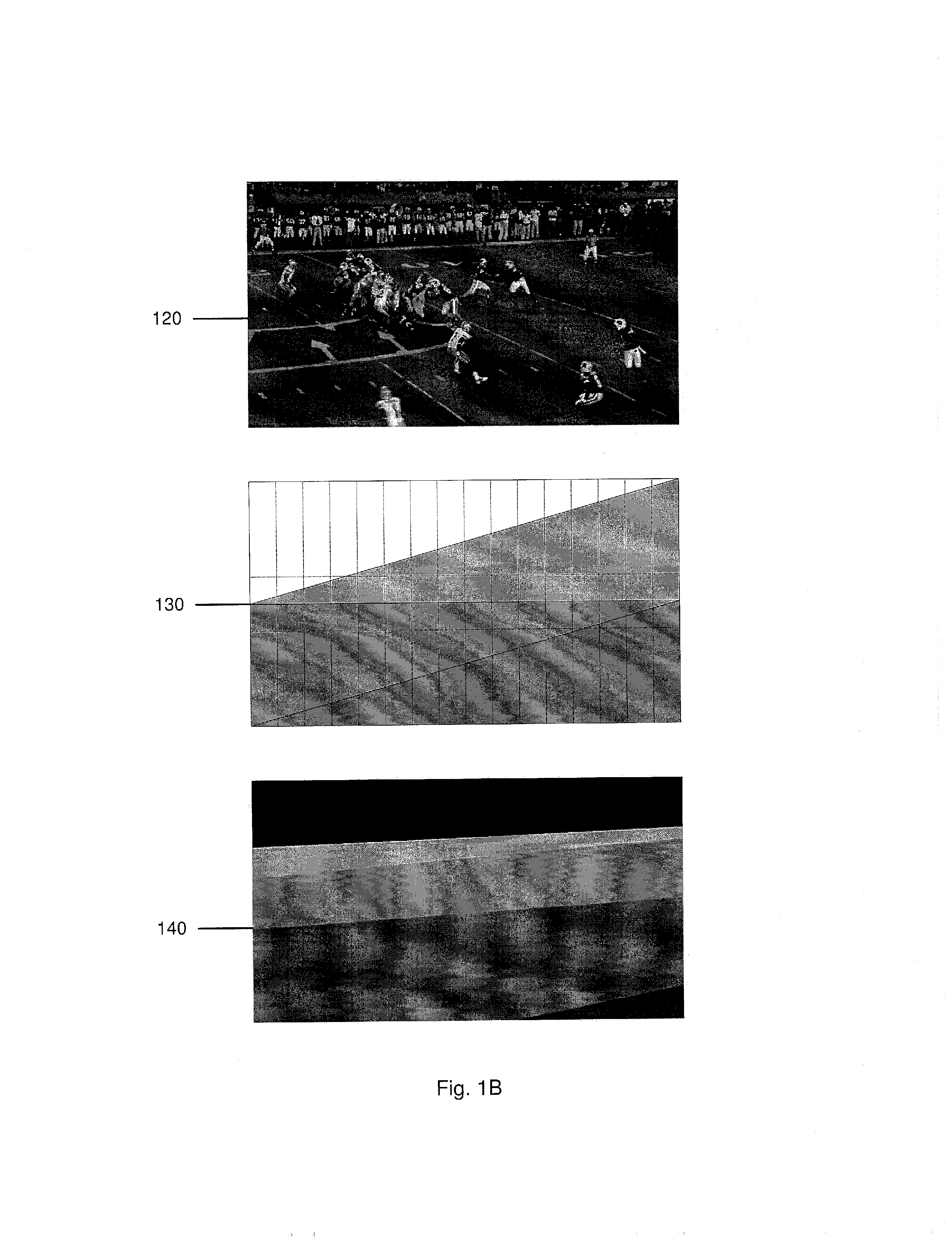Method And System For Determining Camera Parameters From A Long Range Gradient Based On Alignment Differences In Non-Point Image Landmarks
a long range gradient and landmark technology, applied in image analysis, instruments, computing, etc., can solve problems such as difficulty in detecting a sufficient number of landmark point features continuously from all camera field-of-views, target not practical for outdoor-based cameras, and inability to meet the needs of outdoor sports environments, so as to improve camera calibration and reduce errors
- Summary
- Abstract
- Description
- Claims
- Application Information
AI Technical Summary
Benefits of technology
Problems solved by technology
Method used
Image
Examples
Embodiment Construction
[0011]The exemplary embodiments may be further understood with reference to the following description and the appended drawings, wherein like elements are referred to with the same reference numerals. The exemplary embodiments describe methods and systems for calibrating a camera by aligning non-point landmarks in a known reference image to non-point landmarks in an image taken by the camera. More specifically, the calibration in the present application estimates intrinsic, extrinsic, and lens distortion camera parameters by aligning a surface at the scene (e.g. an overhead template / image of the ground) to the surface's image projection as captured by the camera using gradient-based image alignment optimization in which an image warping function is defined. Upon determining an initial set of camera parameters, these may be used for subsequent computations for a non-planar world image calibration by 1) partitioning the reference image into multiple planar patterns (manifolds) and 2) ...
PUM
 Login to View More
Login to View More Abstract
Description
Claims
Application Information
 Login to View More
Login to View More - R&D
- Intellectual Property
- Life Sciences
- Materials
- Tech Scout
- Unparalleled Data Quality
- Higher Quality Content
- 60% Fewer Hallucinations
Browse by: Latest US Patents, China's latest patents, Technical Efficacy Thesaurus, Application Domain, Technology Topic, Popular Technical Reports.
© 2025 PatSnap. All rights reserved.Legal|Privacy policy|Modern Slavery Act Transparency Statement|Sitemap|About US| Contact US: help@patsnap.com



